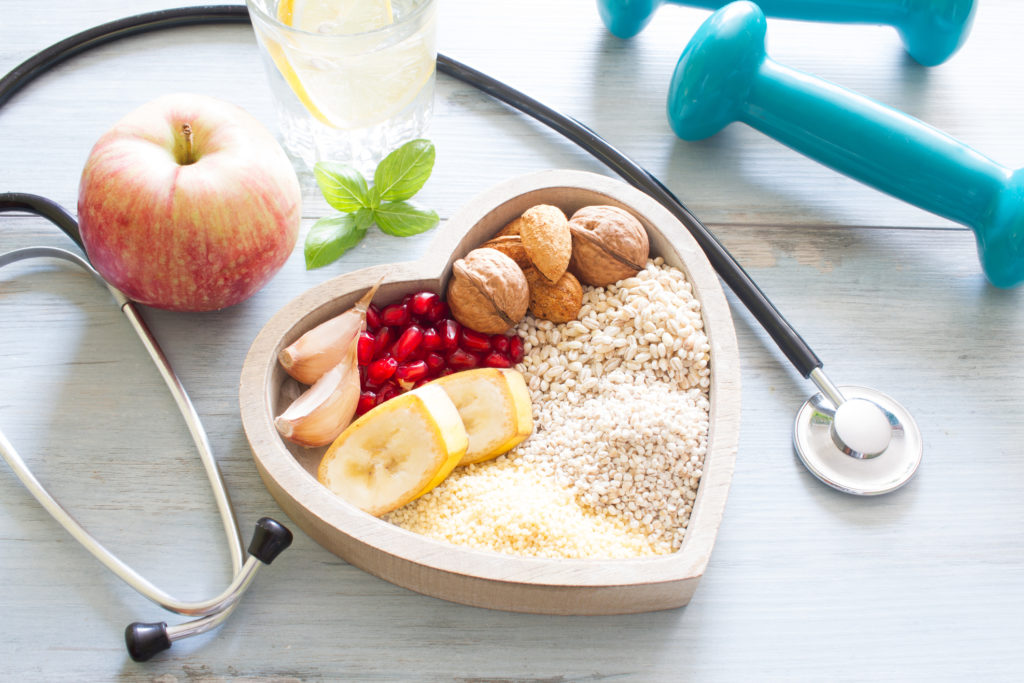What You Need to Know about Cholesterol

February is American Heart Month. One of the main risk factors of heart disease, according to many doctors, is high cholesterol. We’ve all heard that cholesterol is bad for us. But beyond that, there are a lot of misconceptions about this naturally occurring substance, which is essential for life. About 75 percent of the cholesterol in your blood is manufactured by your body. Cholesterol benefits the body in several important ways:
- Helps in the production of essential hormones
- Helps in the production of bile, which helps digest fatty foods
- Synthesizes Vitamin D
And yet, more than 100 million Americans live with what doctors say is too much cholesterol in the blood, and cholesterol tends to increase as we age. High levels of cholesterol may increase your risk for arteriosclerosis and heart disease. But not all cholesterol is created equal, leading to some confusion among many about their numbers and their risk.
Knowing your overall cholesterol levels isn’t enough to determine whether or not you should be concerned. There is, in fact, both “good” cholesterol and “bad” cholesterol. The bad cholesterol (low-density lipoprotein or LDL) is the kind that tends to deposit on the walls of your arteries, which can lead to plaque growth and eventually atherosclerosis, which can block the free flow of blood throughout your body, leading to heart attack and/or stroke.
Good cholesterol (high-density lipoprotein or HDL), on the other hand, can remove bad cholesterol from the body. HDL actually cleans the walls of your arteries, ridding the body of the buildup of plaque caused by LDL. So having an overall cholesterol number from your doctor tells you very little – you need to know how much is “good” (HDL) and how much is “bad” (LDL). Fortunately, most doctors now routinely screen for both types of cholesterol.
Cholesterol also exists in many of the foods we eat. Almost all animal products have some cholesterol in them. There’s been an ongoing debate in the scientific community about whether food high in dietary cholesterol raises serum cholesterol, the cholesterol in your blood, which is what those tests your doctor does measures. Some people say yes, some say no, and other studies are inconclusive. The Framingham Heart Study examined the serum cholesterol in high versus low egg consumption and found no significant difference. Additionally, there is controversy in the medical community about just how big a risk factor high cholesterol plays in heart disease.
So how much serum cholesterol is considered bad? The units of measure for both HDL and LDL are milligrams per deciliter (1/10 of liter) of blood. This is reflected in “mg/dl” abbreviation you’ll see after your test results number. If your numbers are higher than your doctor would like, don’t panic. The numbers by themselves are not enough to predict your risk of disease or illness. They’re simply one indicator that is part of a much larger picture. Other risk factors include your age, blood pressure, and whether or not you smoke. That being said, here’s some general guidelines of what to look for:
Total cholesterol: Ideally, should be below 200. A reading above 240 may be cause for concern. The lower the number, the better.
LDL cholesterol: Ideally, below 100. A reading above 160 may be cause for concern. The lower the number, the better.
HDL cholesterol: Ideally, above 60. A reading below 40 may be cause for concern. The higher the number, the better.
And if all this weren’t confusing enough, recently developed tests measure the size of the particles that make up LDL. According to the American Heart Association, the smaller the particles, the greater damage they can do. If you have high cholesterol, you may want to check for particle size, as large-particle LDL may lessen your reasons for concern.
With so much information out there, it can be confusing to know what to do. Here’s some tips that can help improve your cholesterol numbers and benefit your overall health:
- Eat well – this includes eating a lot of fiber-rich foods such as oats, barley, and other whole grains; fresh fruits and vegetables; foods high in Omega-3 fatty acids, such as wild salmon, sardines and herring; and limiting your intake of highly processed foods and trans fats. Other foods considered particularly beneficial include healthy fats such as those found in wild salmon, sardines, herring, avocados, olive oil and nuts.
- Exercise – just 30 minutes a day can pump up your HDL levels and help you maintain a healthy weight. Obesity is a major risk factor for atherosclerosis and heart disease as well as numerous other diseases.
- Don’t smoke – tobacco lowers HDL levels and quitting can increase HDL.
If, after all that, your cholesterol levels are still out of whack, your doctor may prescribe medication to help bring your numbers down. If so, ask about side effects, which can be serious. You should be aware that prescribing cholesterol-lowering drugs, like statins, for people who have no signs of heart disease, may not be worth these risks.
This article is not intended to replace the advice of your healthcare provider. Speak to your doctor and/or a registered dietitian if you have questions about your nutritional needs.
![LifeCare Advocates [logo]](https://www.lcadvocates.com/wp-content/uploads/sites/270/2017/11/logo.png)